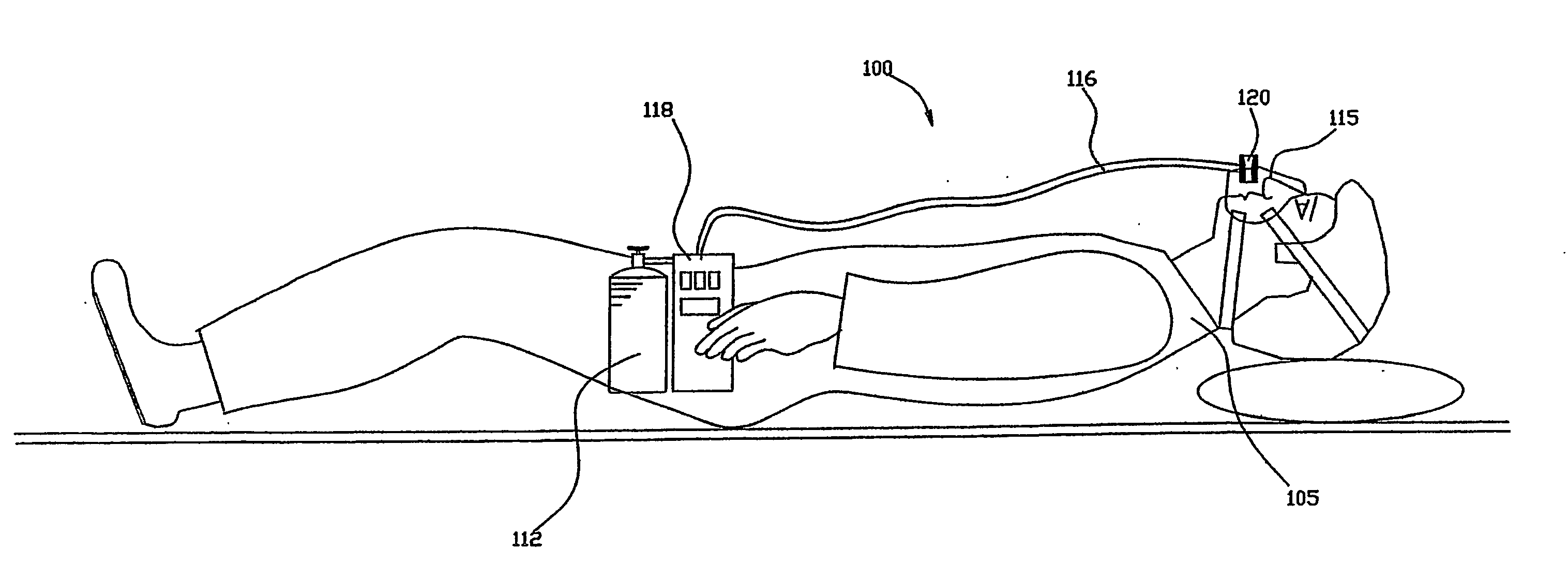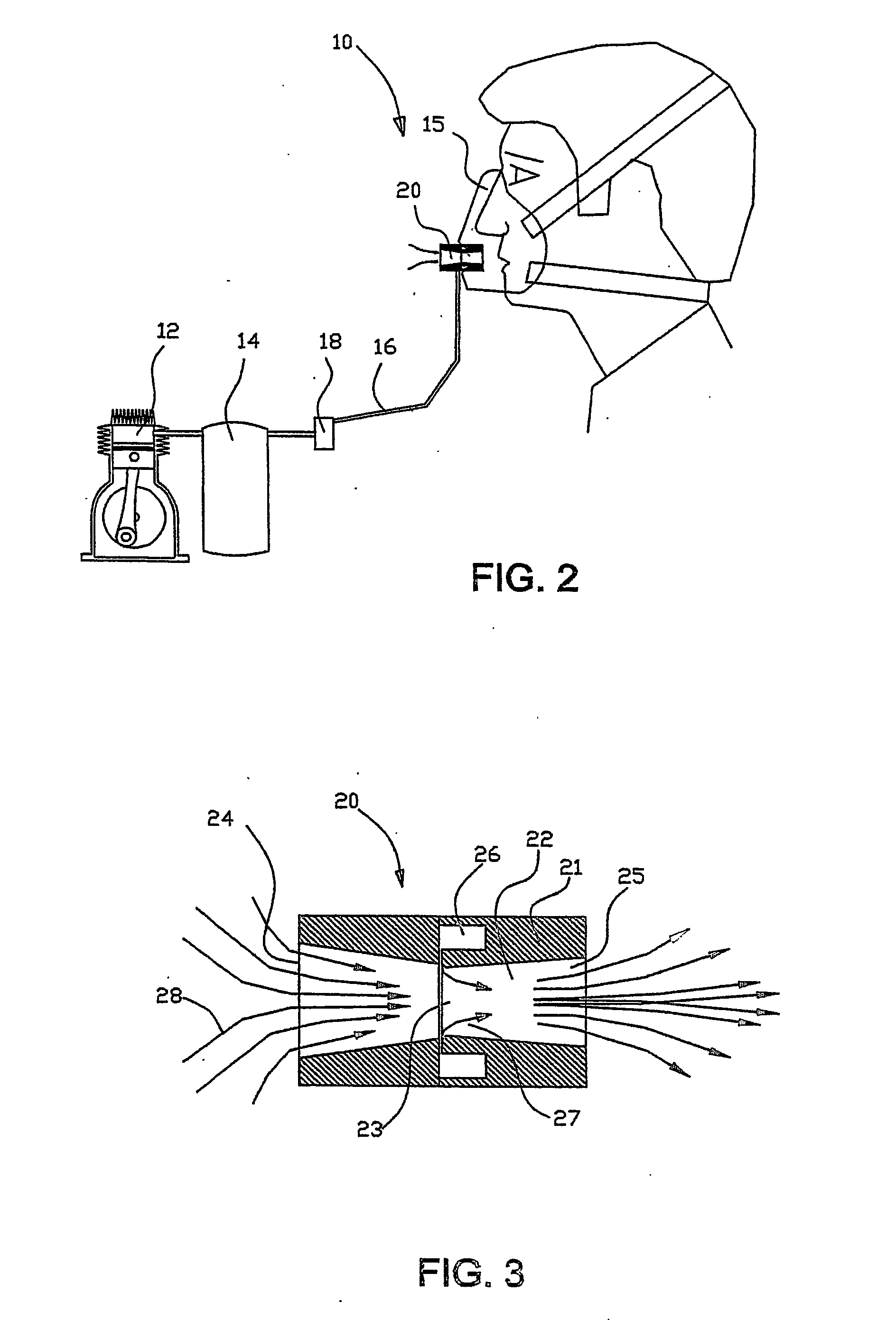A respiratory aid system and method
- Summary
- Abstract
- Description
- Claims
- Application Information
AI Technical Summary
Benefits of technology
Problems solved by technology
Method used
Image
Examples
Embodiment Construction
[0049] The present invention provides system and method for the alleviation of disorders of airway block, which result in the subsequent reduction in oxygen saturation, and the attendant morbidity, by providing the necessary air pressure to overcome airway collapse. In particular, the device and method described herein are intended to overcome most of the disadvantages of present CPAP devices. However, the present invention can be used as a respiratory aid to treat not only sleep apnea patients but any patient requiring positive airway pressure for alleviation of breathing difficulties and airway blocks, both for assisting spontaneous patient respiration and with modifications, for forced artificial respiration.
[0050] The present invention replaces the conventional blower and large-diameter air pipe, employed in prior art CPAP systems, by a high-pressured compressor and an air-amplifier Venturi assembly. As such, the device is simple in design, light in weight, and causes minimal d...
PUM
 Login to View More
Login to View More Abstract
Description
Claims
Application Information
 Login to View More
Login to View More - R&D
- Intellectual Property
- Life Sciences
- Materials
- Tech Scout
- Unparalleled Data Quality
- Higher Quality Content
- 60% Fewer Hallucinations
Browse by: Latest US Patents, China's latest patents, Technical Efficacy Thesaurus, Application Domain, Technology Topic, Popular Technical Reports.
© 2025 PatSnap. All rights reserved.Legal|Privacy policy|Modern Slavery Act Transparency Statement|Sitemap|About US| Contact US: help@patsnap.com



